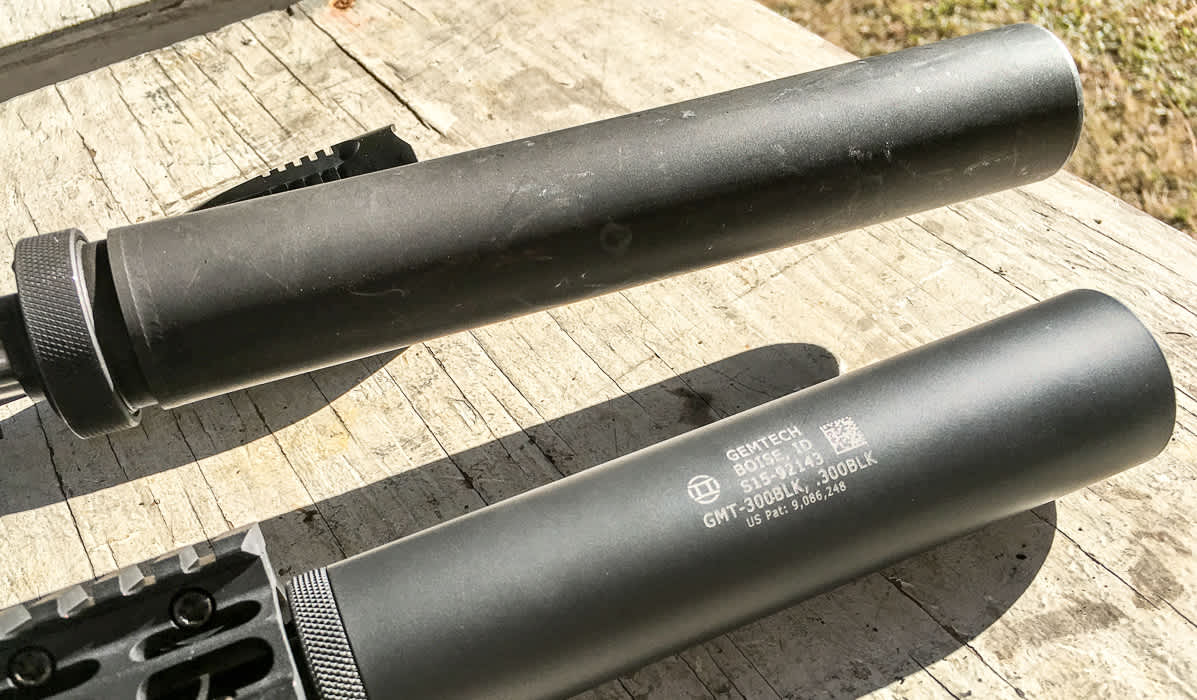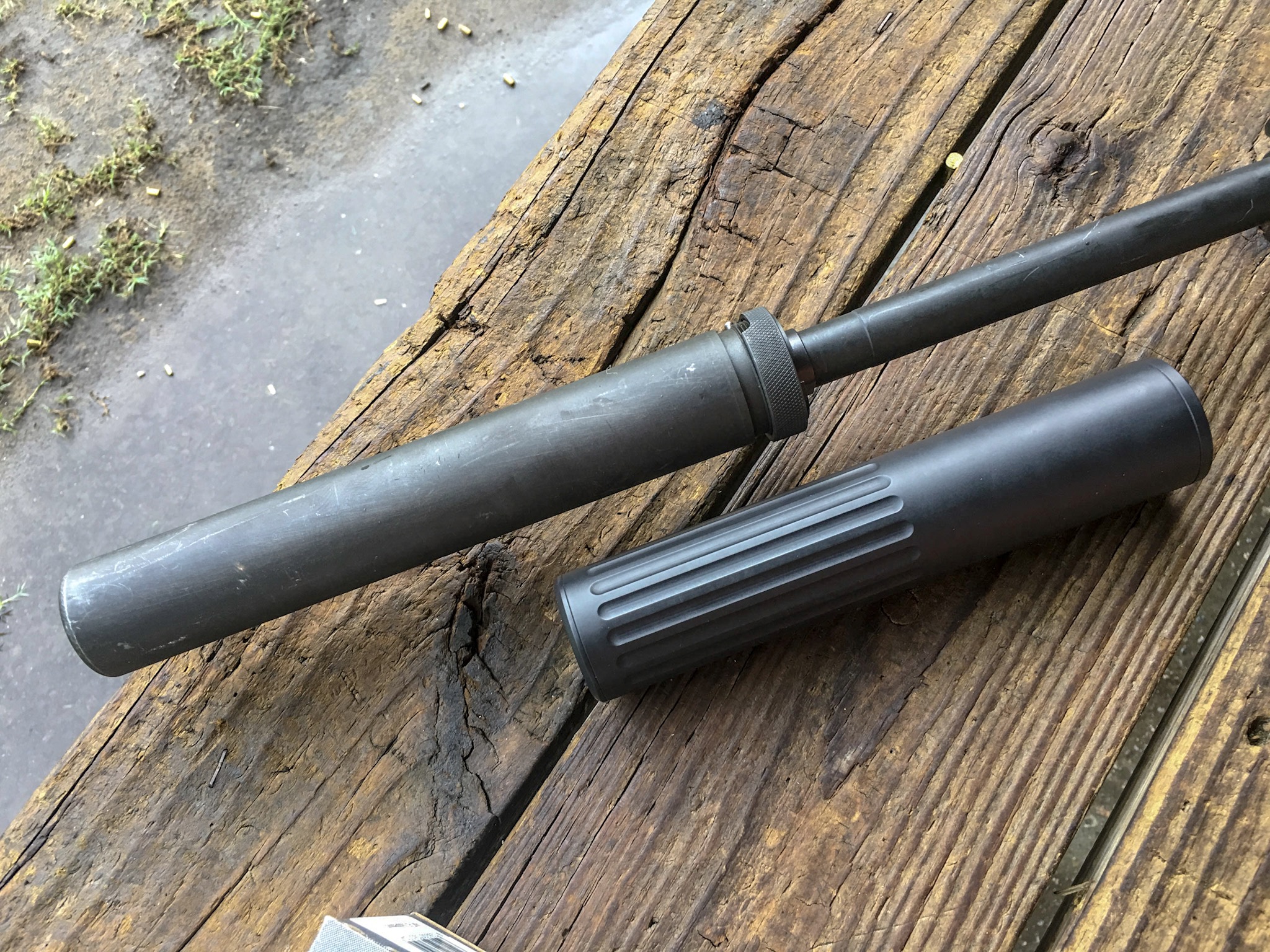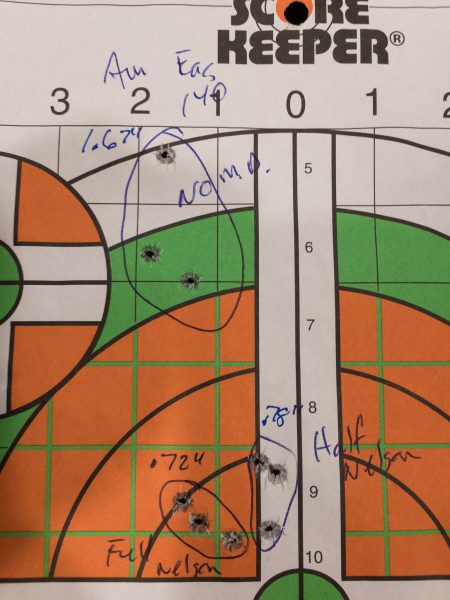Do Suppressors Affect Performance and Accuracy?
Tom McHale 12.04.18

If you add a suppressor to your rifle, you’ll see more benefits than just a reduction of noise. Sure, lowering brain-rattling muzzle blast closer to hearing safe levels is a big benefit on its own. A suppressor also changes the feel of a high-powered rifle. By eliminating most of the blast, you’ll be less susceptible to flinch, and you’ll also experience lighter and smoother recoil.

So far, those things all sound like benefits. But, is that the case? Are there any potential performance drawbacks? Let’s consider some examples.
Do suppressors affect offset?
Almost always, when you add a suppressor to your rifle, the point of impact will change. You’ll need to “re-zero” the rifle for suppressed shooting. With most modern suppressor mounts, this shift is (in most cases) repeatable, so once you adjust for the suppressor configuration with a given load, you won’t have to do it again. If you change any other variables, another zeroing session at the range will be in your future.
To best illustrate what this means, let’s look at some actual examples. I went back though my old range notes to see what happened with point if impact shift with various silencers and rifles.

I added a SilencerCo Specwar 762 suppressor to a Daniel Defense DDM4V5 AR-15 rifle chambered in 300 Blackout. Using supersonic hand-loaded ammo capped with Barnes TAC-TX bullets, the point of impact at 100 yards shifted about two inches down and an inch and a half to the right. I also fired some subsonic loads using the 208-grain Hornady A-Max at 50 yards and noticed a one-inch downward shift and ¾-inch shift to the right. In theory, that would be the same as the 100-yard supersonic results, but I didn’t verify the slower rounds at 100 yards.
Using the same rifle as the previous example, I also tried a Sig Sauer SRD762Ti suppressor with the company’s QD mount system. Using supersonic ammo, I only measured a one-inch downward shift in point of impact at 100 yards. When shooting subsonic ammo, the impact point remained the same vertically but shifted about a half-inch to the right.
Since offset will vary with each model suppressor and rifle, I tried the same test with a Smith & Wesson Performance Center M&P 10 rifle chambered in 6.5mm Creedmoor using 140-grain match bullets. When I added a Q Full Nelson silencer, groups at 100 yards moved down 3.5 inches and one inch to the right.
Just to break the apparent pattern, I should mention some interesting results I observed when shooting a Griffin Armament Thunder Beast Ultra suppressor on that Daniel Defense 300 Blackout AR-15 rifle. Using supersonic ammo, I got zero measurable point of impact shift when using this silencer. It’s made of Titanium, and therefore lighter, so maybe that made a difference. Whatever the cause, this was one of the very few configurations where I didn’t need to maintain two sets of zero data. So, some combinations of rifle, suppressor, and ammo can have negligible point of impact shifts.
Here’s the bottom line. Your group will probably move when you stick a can on the end. Most likely, it’ll shift down a couple of inches. At 100 yards that’s no big deal. However, at 1,000 yards, we’re talking 20 to 35 inches just based on the informal testing I did. The moral of the story is simple. If you’re going to suppress, re-zero and recalibrate your actual point of impacts.

Do Suppressors affect accuracy?
Do suppressors make a rifle more or less accurate? To set some parameters, let’s focus on the mechanical components. What I mean is that using a suppressor can make it easier for you to shoot better. By eliminating the blast and mellowing out recoil, the addition of a suppressor can help the shooter focus on perfect technique rather than the conflagration about to happen in front of their face. Can you eliminate this variable with training? Absolutely. However, for many shooters, it’s a real factor. We’re not going to worry about that here. Instead, let’s look at some real-world examples of the same rifle both with and without a suppressor to see if there is a measurable accuracy difference. Granted, a suppressor doesn’t cast a spell on your stock bedding, rifling, barrel cleanliness, or bolt lock-up, so it’s not a magic accurizing device. However, it does add weight and bulk to the barrel, and that can certainly change performance.
For one test, I used a Masterpiece Arms BA Lite bolt-action rifle with Sig Sauer’s 140-grain Match 6.5mm Creedmoor ammunition. I shot a bunch of five-shot groups at 100 yards using the default factory muzzle brake configuration. Average group size measured .63 inches with a smallest group of .44 inches. Throughout all of this I was careful not to overheat the rifle and fired everything from a “warm but not smoking hot” barrel. Next, I added a SilencerCo Specwar 762 and repeated the process. Guess what? Average group size increased to .90 inches with a smallest of .80 inches. Interesting.
One rifle and one ammo type proves nothing, so I went to a new configuration. I did the same test with the Smith & Wesson M&P 10 rifle, also chambered in 6.5mm Creedmoor. With the factory default flash hider installed, I measured average group size of .98 inches with a smallest of .75 inches. I added the same SilencerCo Specwar and reshot my groups. This time the average group size came in 1.03 inches with a smallest of .97 inches. Let’s call that statistically the same between the suppressed and unsuppressed configurations.
Just to throw a wrench in the works, I repeated the M&P 10 test but used some of my ultra-special hand loads topped with Hornady 140-grain ELD bullets. This time around the suppressed results were significantly better with a suppressed group size average of just .65 inches. The unsuppressed group average was 1.02 inches.
So, with one combination of gear, accuracy degraded. With another it stayed about the same. And with a third, accuracy improved measurably. Only a billion rounds and a government-funded study will tell for sure, but I’m going with a big “it depends” whether a silencer helps or hurts accuracy. For your unique configuration, try it and see what your rifle and ammo combination do both ways.

Do suppressors affect performance and reliability?
Since the purpose of a suppressor is to disrupt the flow of gas exiting the barrel, it can have a big impact on function. With a bolt gun, all gas exits the muzzle anyway as none is diverted to cycle the action. However, on a direct impingement or piston-operated semi-automatics, things can get interesting. They design those rifles to meter the proper amount of gas, in a certain pressure and velocity range, through a port in the bore. This redirected gas drives the bolt and carrier to eject spent cases, cock the action, and reload a fresh cartridge. If there’s too much gas, the action can cycle too fast and you might experience feeding problems. You’ll also experience excessive wear and tear on the action and that will shorten the life of your rifle. Too little gas and there may not be enough energy to extract, cycle the action, and reload. For example, if there’s not enough energy to drive the bolt back with enough oomph to overcome spring recoil pressure, it may not move behind the next cartridge in the magazine and nothing will feed.
As a result, gas guns may require some tuning when adding a suppressor. The silencer itself creates more resistance to gas exiting the bore, and, as a result, more back pressure. You’ll feel more pressure driving the action and a big increase in powder residue in the action. In fact, you’ll likely notice that even the rounds in your magazine get filthy. Will this cause your gun to jam? Maybe not immediately, but you will have to clean more frequently to keep things running.
There are plenty of benefits to suppressing a rifle but adding that can up front may come at a cost. As long as you know what those potential impacts are, it’s no big deal. That’s why it’s important to test your rifle, with your preferred ammo, both with and without the suppressor attached so you know what to expect.

